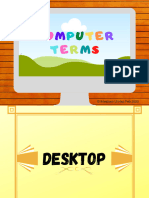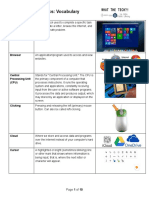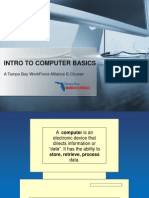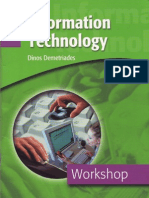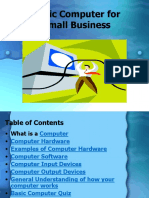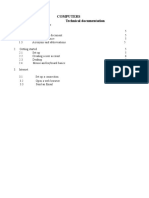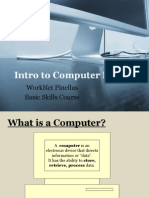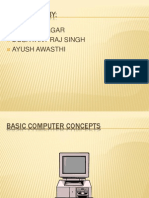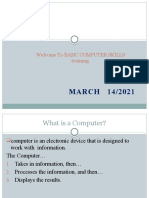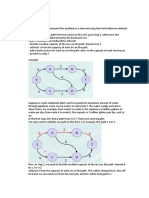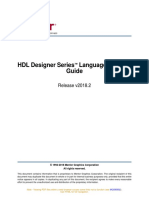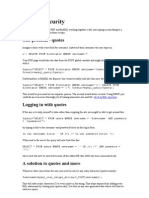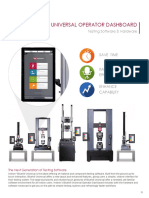0% found this document useful (0 votes)
147 views26 pagesBasic Computer (MIT)
Here are the steps to save a document:
1. Click File in the menu bar
2. Select Save As...
3. Browse to the location where you want to save the file, such as your Documents folder
4. Give the file a name
5. Select the file format, which is usually PDF or Microsoft Word format
6. Click Save
Let me know if you need any help finding or accessing the location to save your file. Ask for assistance from the classroom helpers as well.
Uploaded by
himal tvCopyright
© © All Rights Reserved
We take content rights seriously. If you suspect this is your content, claim it here.
Available Formats
Download as PPT, PDF, TXT or read online on Scribd
0% found this document useful (0 votes)
147 views26 pagesBasic Computer (MIT)
Here are the steps to save a document:
1. Click File in the menu bar
2. Select Save As...
3. Browse to the location where you want to save the file, such as your Documents folder
4. Give the file a name
5. Select the file format, which is usually PDF or Microsoft Word format
6. Click Save
Let me know if you need any help finding or accessing the location to save your file. Ask for assistance from the classroom helpers as well.
Uploaded by
himal tvCopyright
© © All Rights Reserved
We take content rights seriously. If you suspect this is your content, claim it here.
Available Formats
Download as PPT, PDF, TXT or read online on Scribd
/ 26




